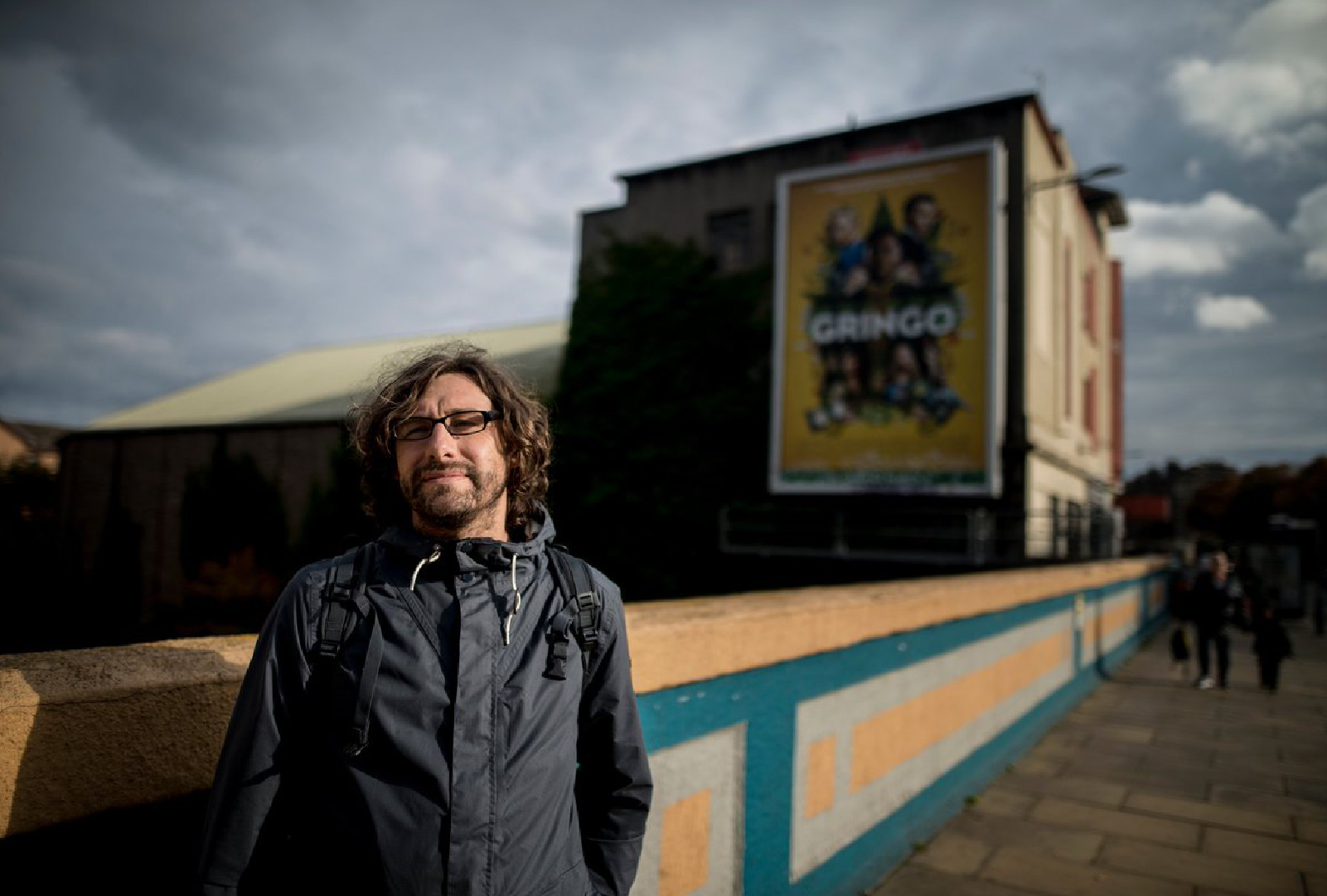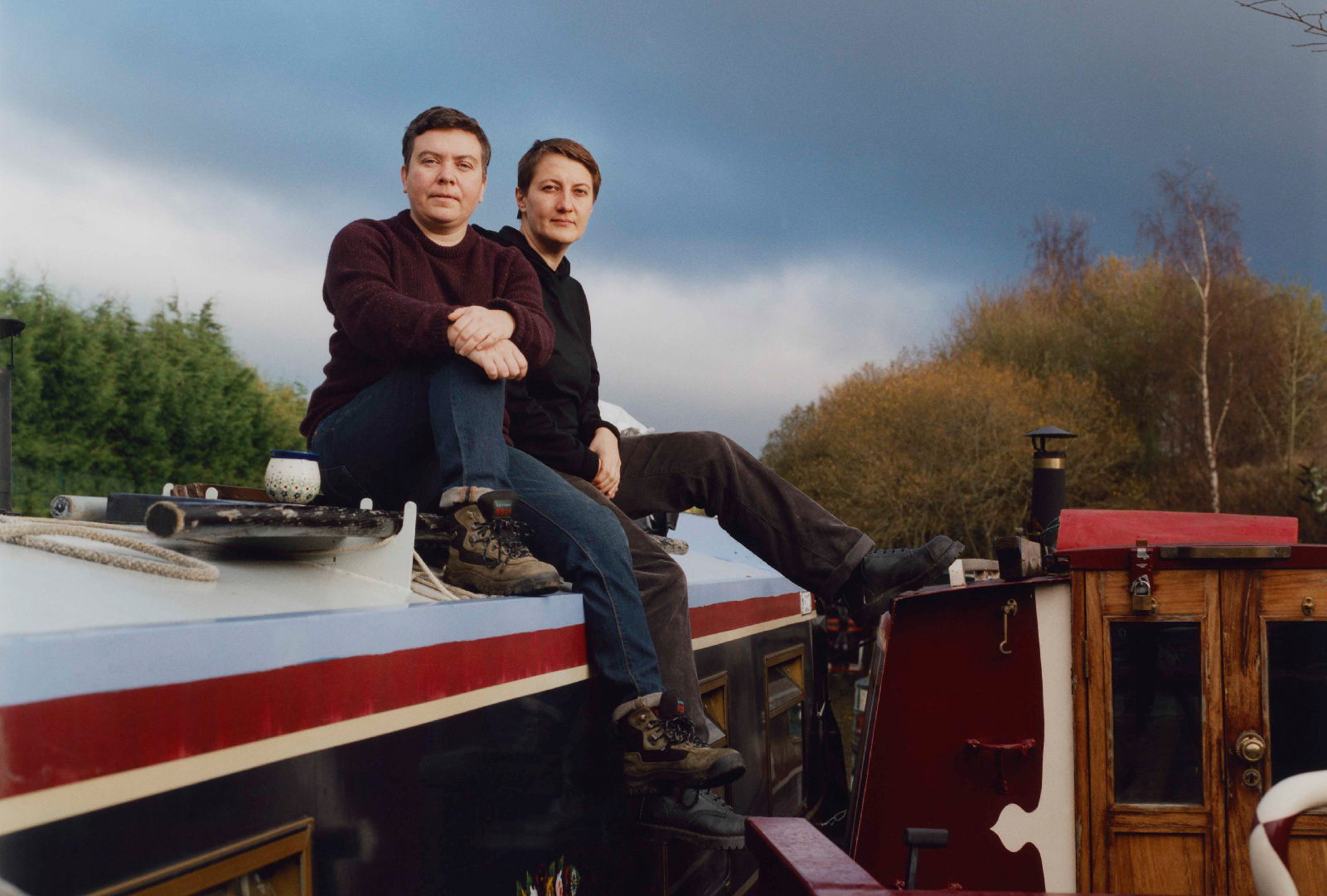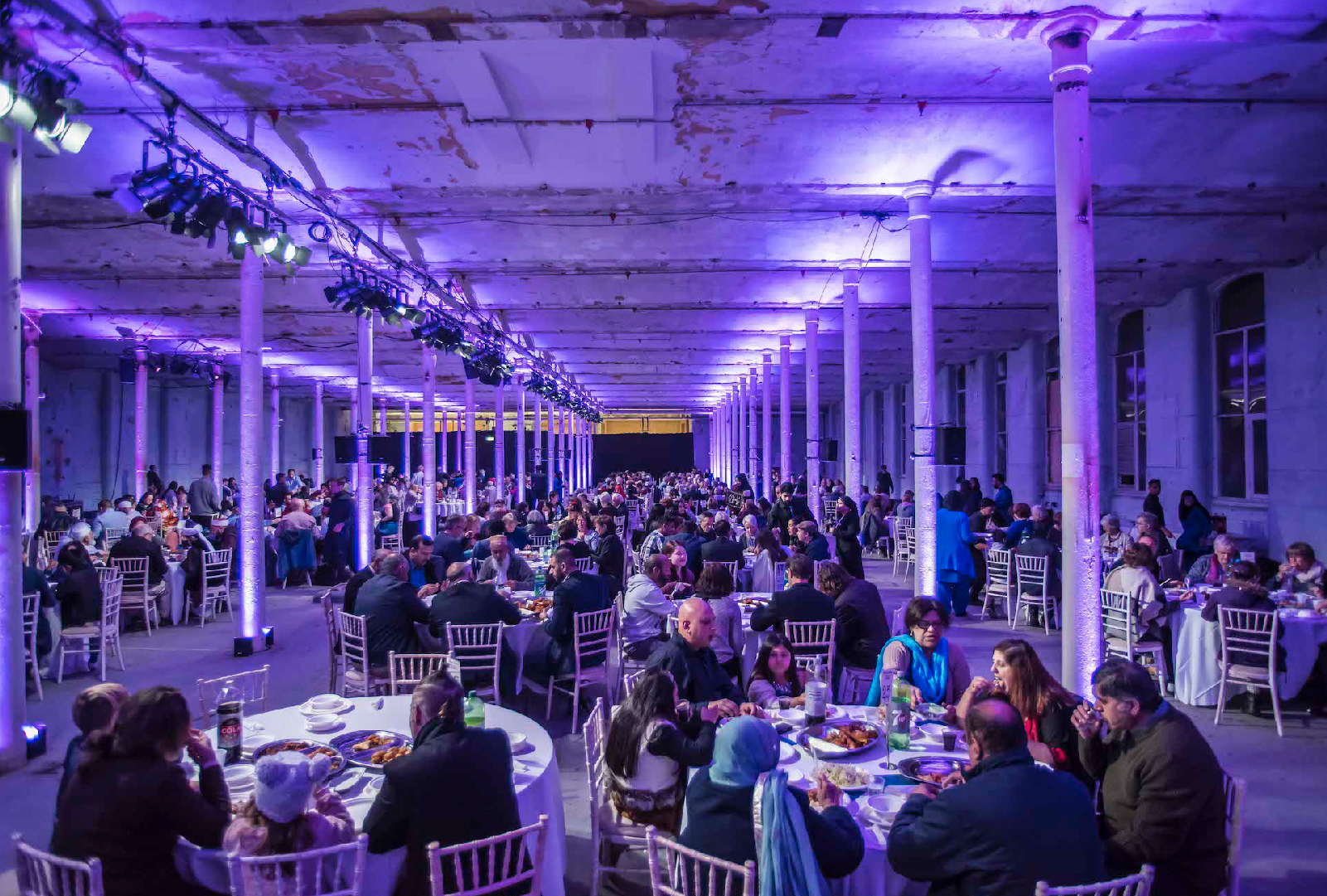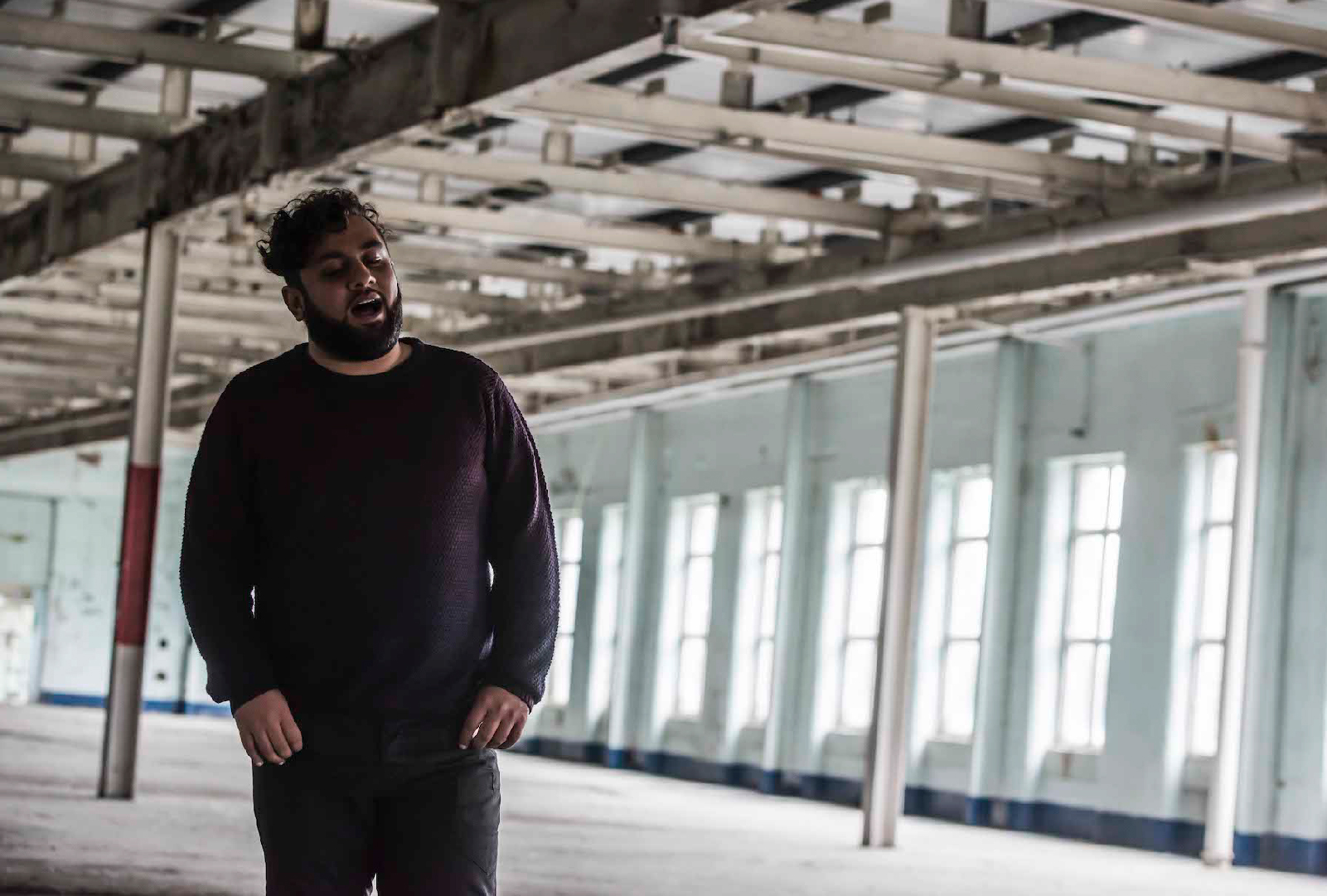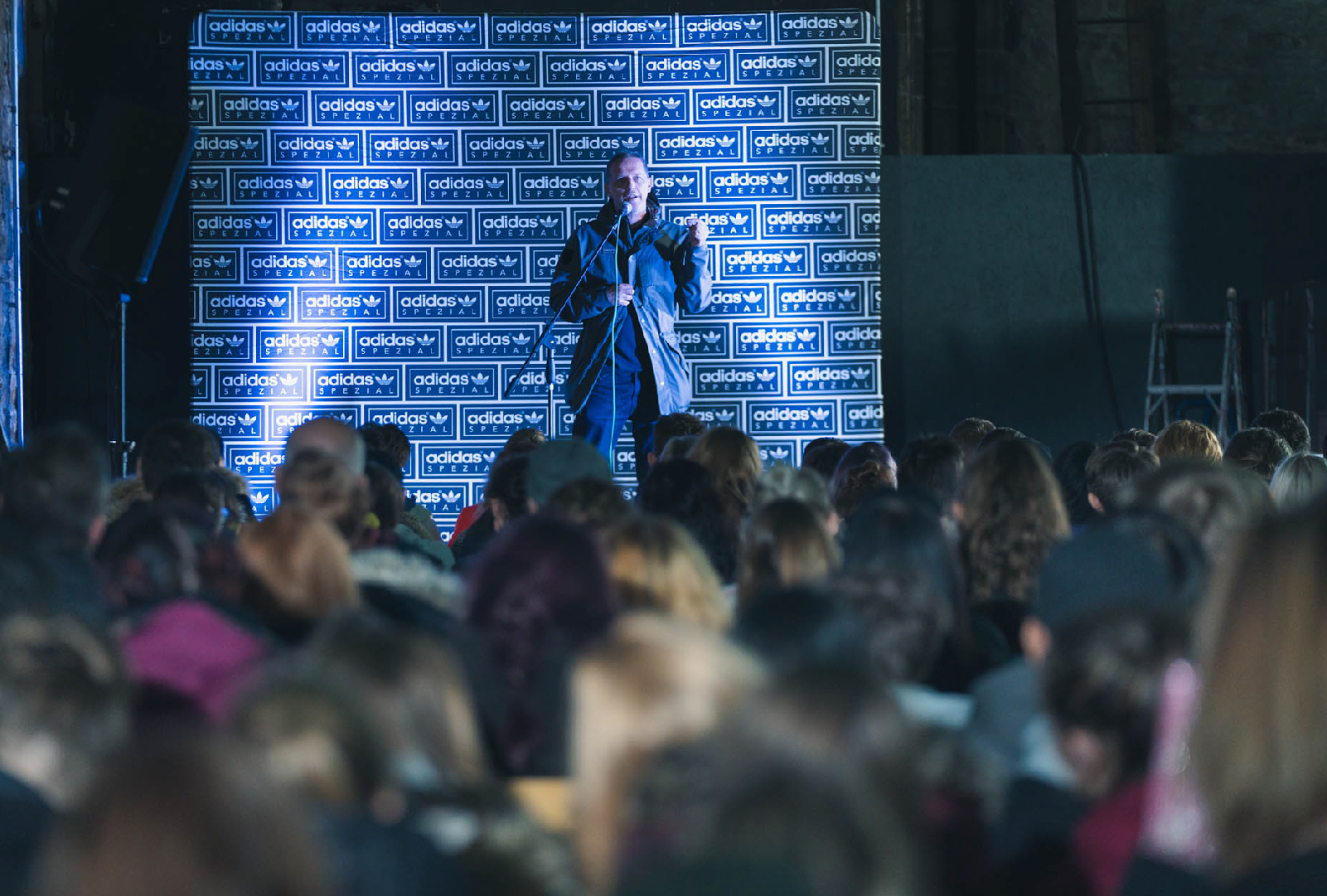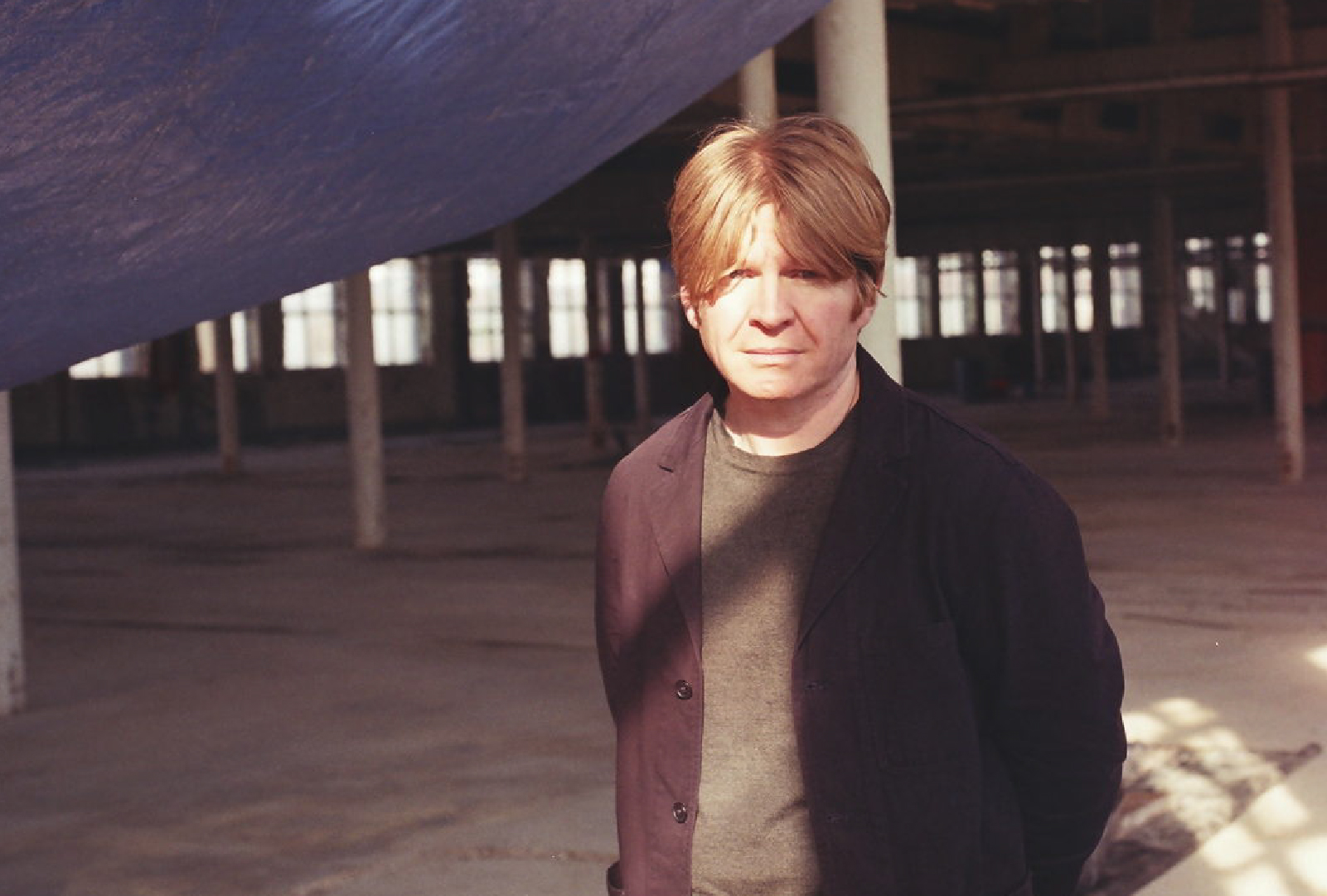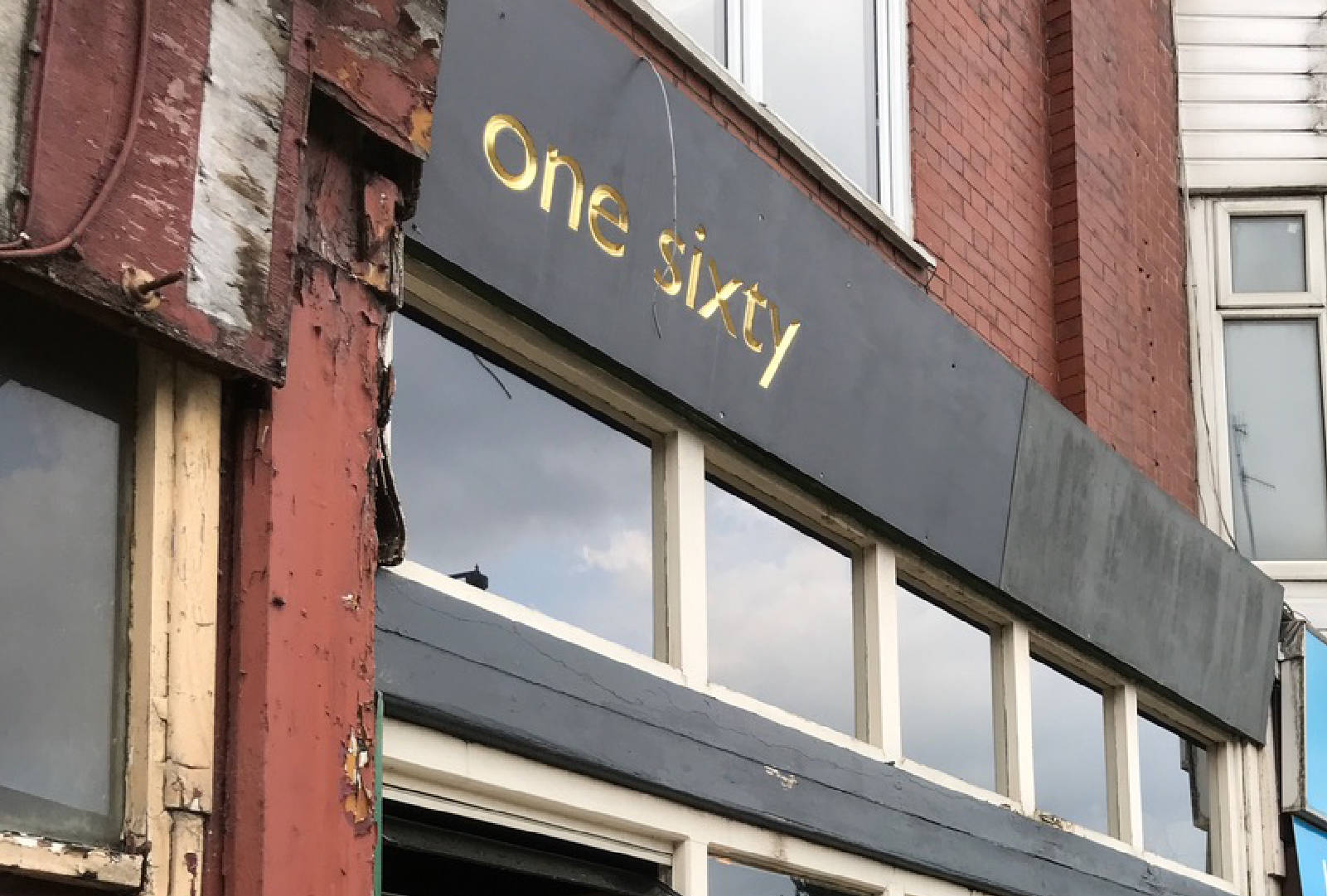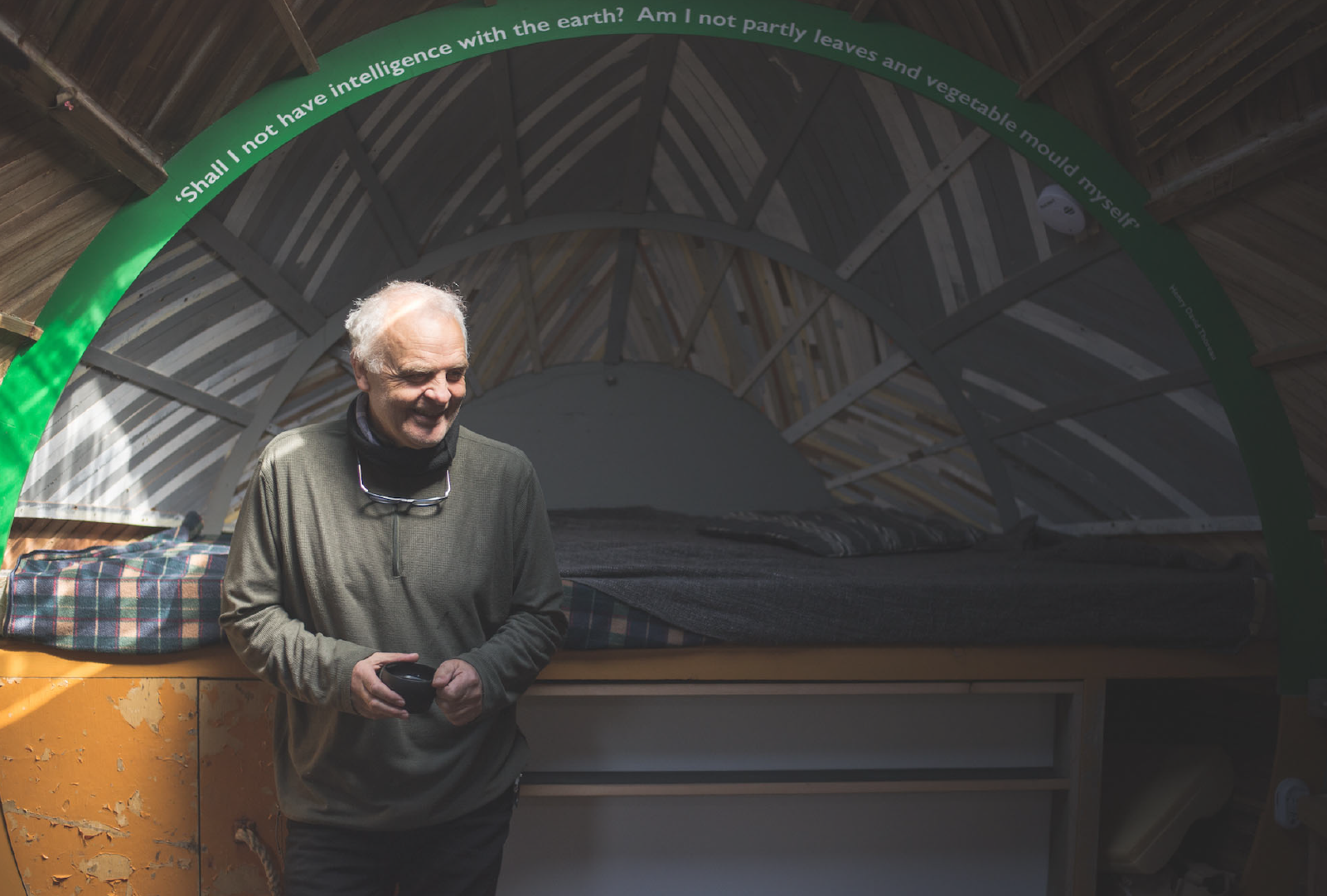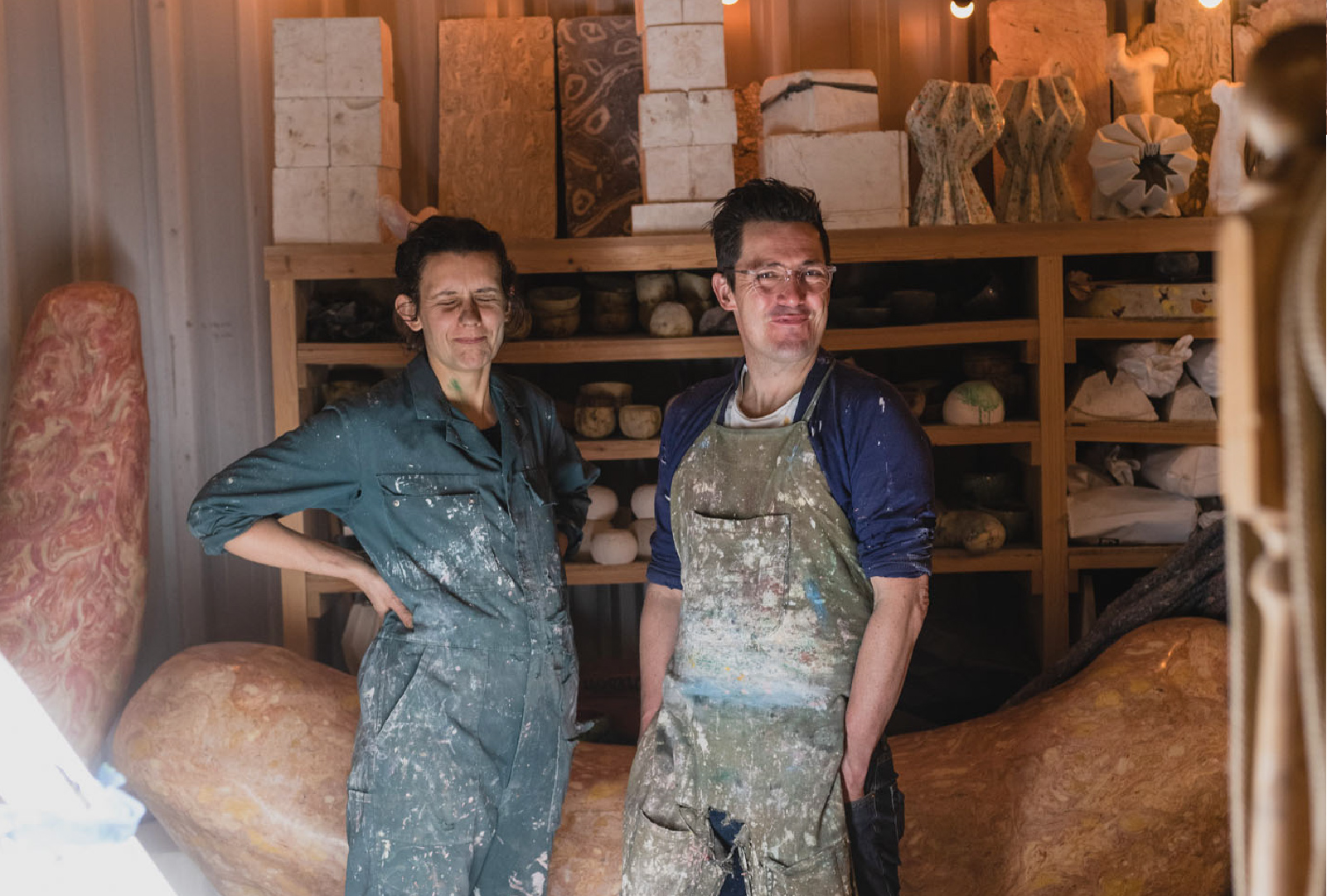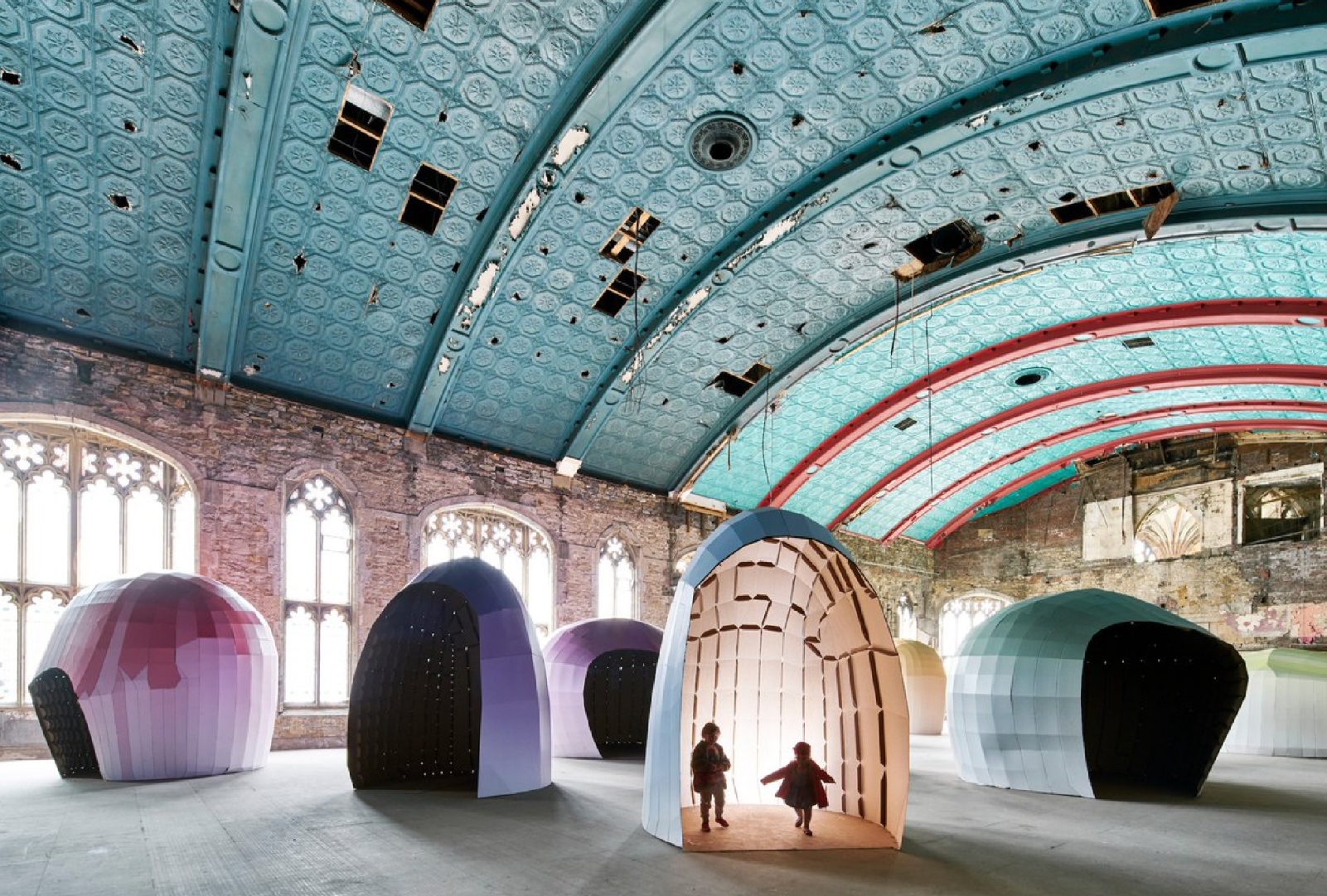A Community
Conversation
CLAIRE WELLESLEY-SMITH
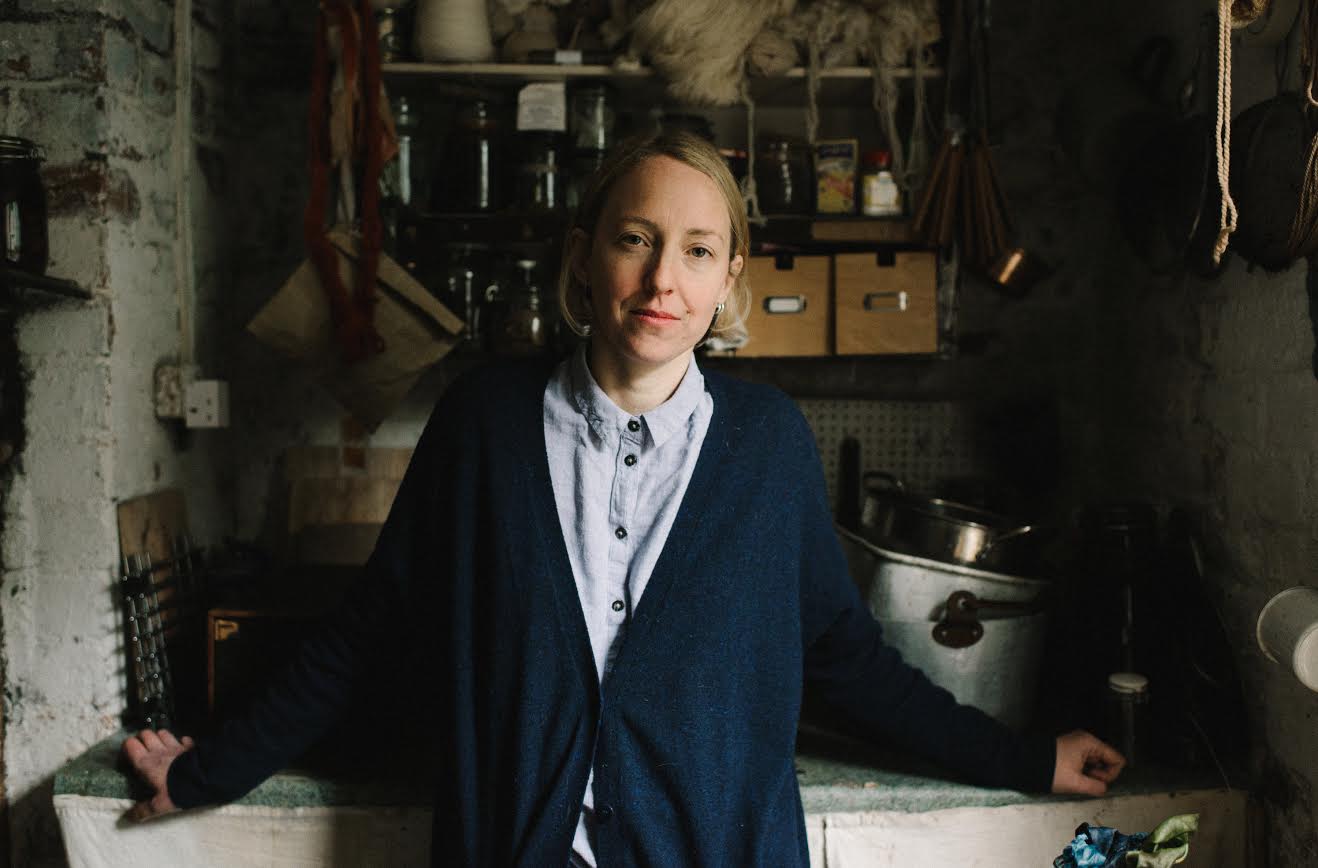
Photographer Carolyn Mendelsohn
Claire Wellesley-Smith is an artist, writer and researcher based in Bradford. Her making and writing practice investigates textiles and their heritage. Her projects are often long-term engagements with communities and look at how place, heritage and memory connect people to their environment.
www.clairewellesleysmith.co.uk |
Instagram | Twitter | Pinterest
On the 6th March 2020, project participants, volunteers and organisations involved in Super Slow Way programmes including Local Colour, Accrington, were invited by Super Slow Way to The Garage in Brierfield to take part in a group conversation reflecting on the work done over the last 5 years. Artist Claire Wellesley-Smith offers her own reflection on this meeting and her own experience here.
I have been involved with a Super Slow Way project since late 2016 as artist in residence at Elmfield Hall, Gatty Park, Accrington, the house built by the innovative dye manufacturer, Frederick Gatty in the 19th century. Inspired by this, my residency, Local Colour, has developed alongside a community garden of textile dye plants we are growing at the site. The starting point and metaphor for this project was a madder plant: unassuming looking, slow growing, with roots that tangle and firmly embed themselves in place. These roots produce a bright red dye, central to the manufacture of Turkey red, central to the dyeing and printing industry in the area from the late 18th to late 19th centuries, bringer of workers and, initially, wealth to the local community. I work weekly with a group at Community Solutions North West, a social enterprise based in Elmfield Hall that works with adults at risk of social isolation. Together we explore the heritage of the site and wider area, through creative work, conversation and research. Invited to share our thoughts about the programme, several of this group agreed to attend.
‘You wonder what to say, but everybody said something.’
At In-Situ we arrive to find a room full of people: participants, workers from community and arts organisations, schools, and art galleries and volunteers who have been involved in projects Super Slow Way has been delivering across East Lancashire since 2015. Gathering to have a community conversation, to reflect with others about the work done, observations made and possibilities for the future. Today I have come with six participants, some of whom have been involved in the Local Colour project since its start, to share their experiences with others. We listen and contribute to a large group conversation that starts with introductions from all and then continues with its own momentum. The atmosphere is animated, the observation and exchange threaded with local stories and personal connections. Themes are picked up and experiences from different projects, developed and run in different communities, find commonalities. Everyone contributes. The connections, voices, identities and methods projects have used to approach their themes run through the conversation.
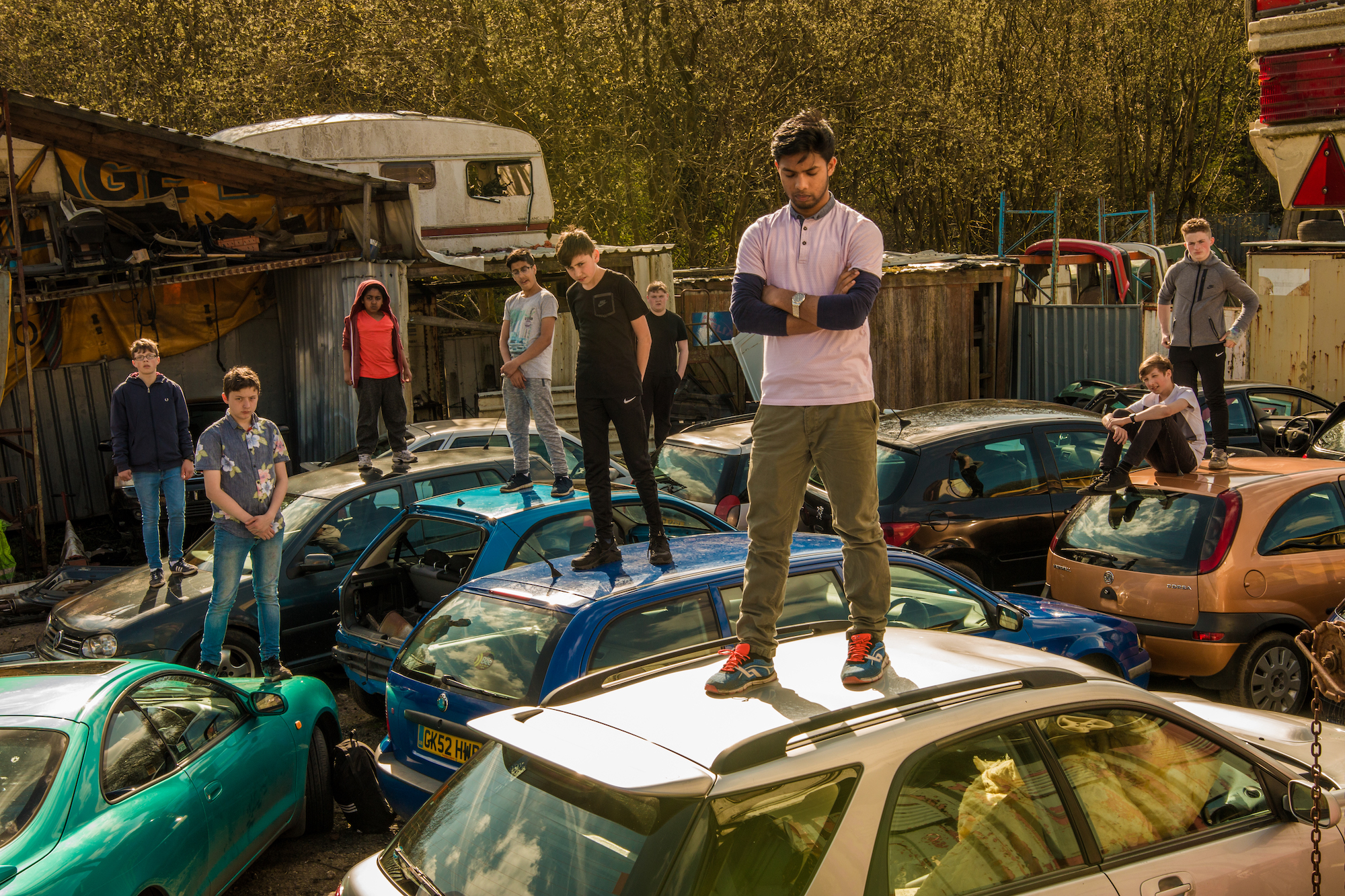
BEYOND LABELS 2016, HYNDBURN. A CREATIVE COLLABORATION WITH THE HOLLINS, SPOKEN WORD POETS – YOUNG IDENTITY, MUSIC PRODUCER - YUSUF M’RABTY, PHOTOGRAPHER - SAQUIB CHOUDHRY AND FILM MAKERS - SEAL FILMS
PHOTOGRAPHER SAQIB CHOUDRY
‘How do we feel connected? Are we building connections?’
A participant from the Local Colour project talks about his lifelong love of art and creative activities but says that ultimately the biggest thing he has experienced through his involvement in the project is a strong sense of connection, ‘bringing people together’. This leads to a discussion about connecting and flourishing. ‘Cultural dialogue is such a profound and rich way of connecting and understanding; it can make a really rich and diverse world.’ Connection to personal stories, ‘I want that connection to my past. I am still Blackburn; I want to embrace it and love it. I think it’s a natural thing for everybody that we want to hold on to our heritage.’ And the value of that, ‘…it helps you deal with change. Because you realise the value of whatever heritage you have, it’s personal.’ This theme of connection moves to a discussion about the textile heritage of the area, described by a contributor through their experience of researching the heritage of wooden block printing, and later updating it using contemporary laser-cutting technology. The connections found through the working lives of communities, and the reuse of buildings from the industry, such as during Shapes of Water, Sounds of Hope, developed with artist Suzanne Lacy at Brierfield Mill is recounted by a community collaborator on the project who is now employed by In-Situ. ‘People came from far and wide for that project and to give their voice. They came back to connect for that project and to give their voice about growing up in this area and what it meant to them. The mills have bags and bags of significance for people’s lives …. One space that we shared after so many years in the same area. We came with our families to the shared space.’ Another personal journey is described, from volunteer experience on that project, to full-time work in a local community cohesion organisation. He describes projects allowing ‘…people to reconnect to family history, spiritual history, sufi history. The faith impact. They reconnected with people they used to work with, then made connections afterwards. You can’t measure the legacy of an art project. The organisations working together, stronger relationships, building bridges.’

Cultural dialogue is such a profound and rich way of connecting and understanding; it can make a really rich and diverse world.
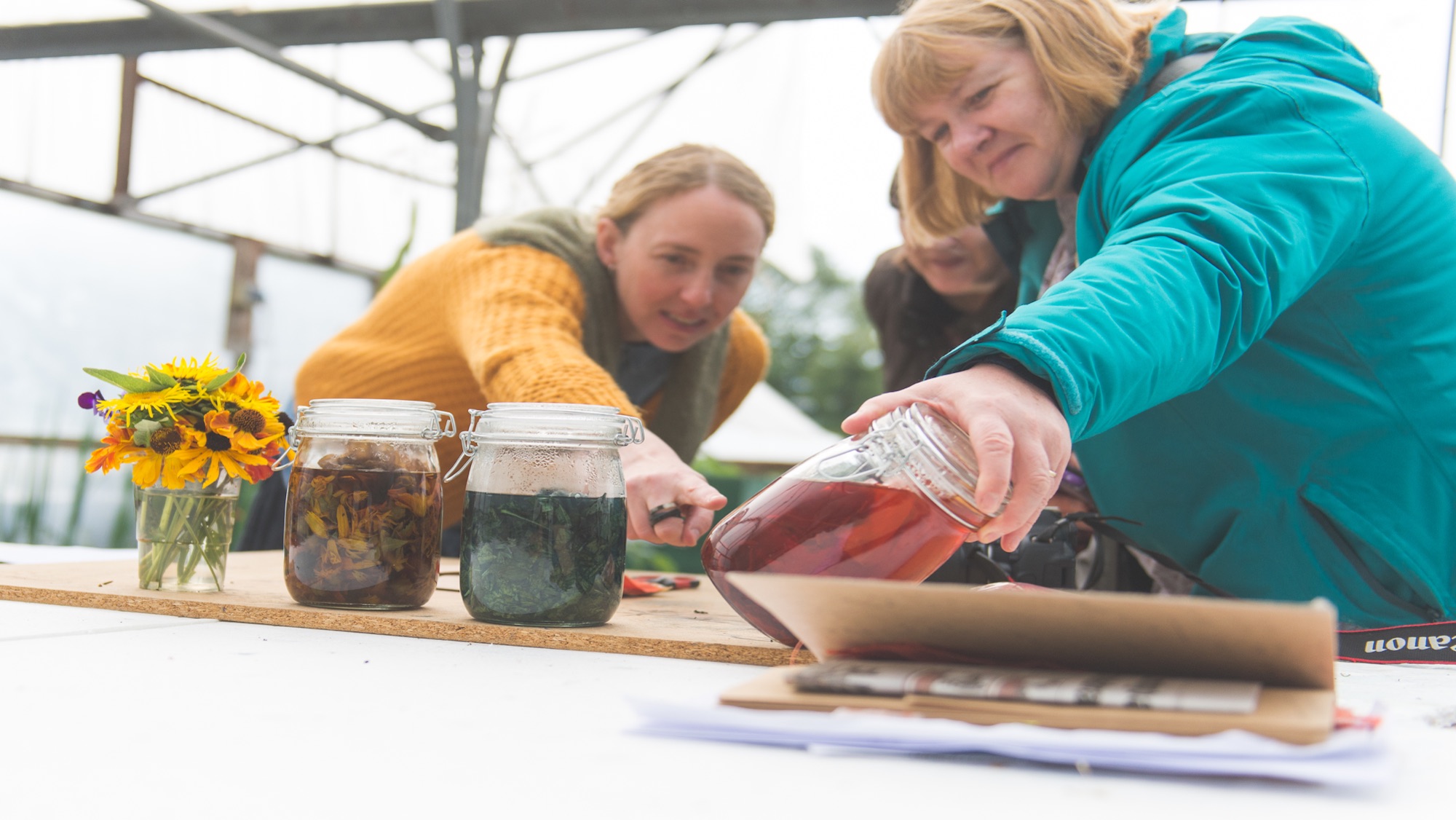
Local Colour 2016, ONGOING, HYNDBURN. WITH ARTIST CLAIRE WELLESLEY SMITH AND PARTNERS COMMUNITY SOLUTIONS
Photographer STEPH HEAP
‘What does language and culture mean to us now?’
Projects offering an opportunity to tell personal stories, of arrival and belonging, are described in a discussion about language. The perception of being ‘lost in translation’ related to a project coordinator by a group of older women from the South Asian community as their language (Punjabi) develops with successive generations and how to process that change. ‘We discussed the whole feeling of diaspora in the area and how we connect. At the same time, we feel so fully proud of where we are today and we all strongly identify as Pakistani British citizens, but at the same time it’s like - how do we not lose our roots and our culture and where we came from? Because that still matters so much to us.’ Another recollection from a British Textile Biennial volunteer concerns her great-grandparents, born in the nineteenth century in Blackburn and a big part of her childhood, ‘I’ve kissed someone who was born in that century! I want to be able to go back and hear them speak again’. This is linked to an experience during the Gatty Park project recalled by a participant, ‘You’re talking about retaining family heritage and the voices of the past. I’ve spent a lot of time in the Lancashire sound archives, personal stories, you can listen to them.’
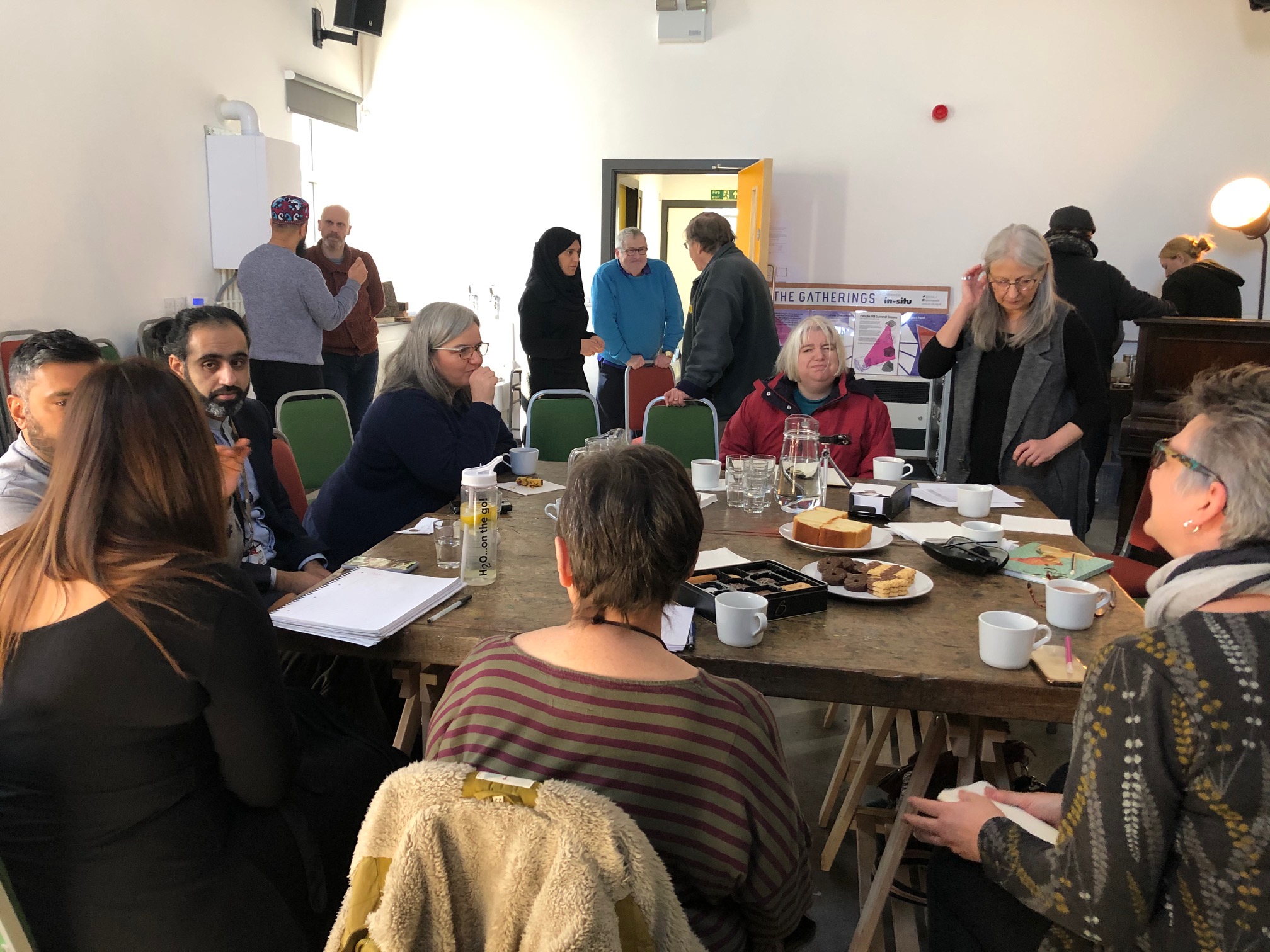
COMMUNITY CONVERSATION 2020, THE GARAGE PENDLE
Photographer jenny rutter
These projects have given people time to explore and then come up with a creative outcome.’
Time and its value to the programme is something that is revisited throughout the conversation, ‘We are called Super Slow Way for a reason… Time is one of our most precious assets when you’re talking about creativity’. We shared discussion of how this has worked for different projects included my own experience of initially being given an open brief for my residency at Gatty Park and then the opportunity to extend the residency for a further two years. This became an opportunity to develop a project alongside the community, an asset-based rather than top-down model, with time for reflection as the work developed. A support worker for learning disabled adults talks about the transformation, over two years of attending, she has seen in a project participant there: ‘She loves to come each week. it’s a really big thing for her to learn alongside people from many different backgrounds and to discover the place she lives in a new way.’ For other projects this slow, intuitive way of working was not always easily assimilated, particularly in institutional structures. A story from Beyond Labels: In Young Men’s Shoes, a school-based project revealed initial resistance to the idea, ‘we had to re-educate the educators, for three years we were at loggerheads with the staff. We’ve convinced them though, they could see the outcomes, the development, the journey.’ The same project co-ordinator talked about how secondary schools around the North West are now using their experience to build their own projects and make new links with cultural organisations, museums and galleries.

This became an opportunity to develop a project alongside the community, an asset-based rather than top-down model, with time for reflection as the work developed.
As part of our session the following week at GattyPark the Local Colour group discussed their experience of gathering with others to talk about their projects. They were enthusiastic about having had the opportunity to speak and share their experiences through a range of different work - from mass participation artwork, school projects linking artists and poets with young people, embedded community residencies, festivals and exhibitions. ‘The people there presented what they were doing, not what they thought they should be doing.’ commented one member of the group, reflecting the honesty of the conversation, a sharing of positives and ambition for the future, and also the difficulties in measuring the impact of projects that take place across multiple timescales and in diverse communities with many voices. I recognised something different in my own reaction to the event: that I had been anxious about how the Local Colour participants would respond to speaking in front of a large group of people. I had had to resist a feeling that I should speak for them. Listening to them I was able to hear the confidence in communication, and knowledge of their project that they had developed during the residency. It made me think again about the madder plant, the starting point for my work with Super Slow Way. Three years of slow growth has produced a strong crop; perhaps on the surface tangled and unremarkable but below ground connected, embedded, flourishing.

Three years of slow growth has produced a strong crop; perhaps on the surface tangled and unremarkable but below ground connected, embedded, flourishing.
The community conversation was attended by (among others); members of the Local Colour project, Rauf Bashir and Shabaz Ahmed from Building Bridges Pendle, Paul Hartley and Zoya Bhatti from In-Situ, Waqar Ahmed from Beyond Labels, Gillian Berry from Haworth Art Gallery, Uzma Raziq from Idle Women and Super Slow Way and Pat Fawcett, Andrea Westall and Susan Brazendale who have volunteered for and supported Super Slow Way projects in recent years. We thank them all for sharing their thoughts and for their ongoing support.
Articles

